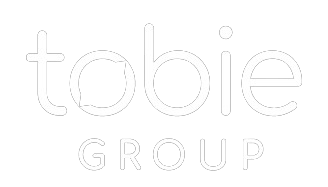Wal-mart, one of the largest companies in the world, just executed a rebrand that left many people scratching their heads. If one of the largest companies in the world can spend crazy amounts of money and time, only to make subtle changes to its logo and brand, it’s easy to see why most organizations have trouble identifying a logo and a brand.
It doesn’t have to be that difficult! Here are some practical thoughts to keep in mind when thinking about your next logo (and directing your designer!)
1. Your Logo Should Represent Your Brand - But it Doesn’t Need to Tell the Whole Story
A common misconception about logo design is that it must clearly showcase EVERYTHING your business does. Yet, if you examine some of the most iconic logos throughout the world, they don’t necessarily broadcast the exact product or service being offered. For example, nothing about the golden arches at McDonald’s screams “hamburgers,” yet it’s undeniably memorable.
Adidas uses “three stripes” to represent their company values: performance, design, and craftsmanship.
The true purpose of a logo is to establish a lasting connection with your audience. That’s not to say you should avoid obvious design cues altogether. In certain cases (think Kentucky Fried Chicken or Burger King) being crystal clear in your logo can work wonders. Ultimately, the key takeaway is that while your logo should reflect your brand’s identity, it doesn’t have to spell out every detail of what you do.
Tobie Tip: Many successful logos find elegant, straightforward ways to convey their story through design. Ask yourself: How can I communicate my brand’s essence in the simplest way possible? It may be helpful to tell the entire story of your brand to your designer. Notice how the logos below showcase each brand’s “story” or some subtlety about the company’s culture or core product.
A merger of four automobile manufacturers are represented in Audi’s interlocking rings.
A razor sharp cut in the “I” let us know Gillette’s blades are sharp,
This may look like organic colorful shapes, but each color represents the shape of metropolitan London throughout history.
A custom font created for Hershey’s Kisses, creates a Hershey’s Kiss in between the “K” and the “I”.
A conveniently placed smile in the Amazon logo represents the happy customer, but also lets you know Amazon sells everything - from A to Z.
FedEx is fast and they want you to know it with a beautifully placed arrow between the “E” and “X”.
2. Be Deliberate In Your Choices
Sure, that color may be visually appealing or you might love a font because it reminds you of your favorite movie. But does it truly represent your brand, and will it connect with your audience? Remember, color, fonts, and other design choices have an immediate psychological impact on how people perceive your brand.
Color
We tend to remember colors because they capture our attention and stimulate brain activity. Have you ever noticed that lawyers, hospitals, banks, and police departments often use shades of blue in their branding? That’s because blue symbolizes trust, calmness, loyalty, and authenticity.
Color symbolism—the association of specific colors with particular ideas or emotions—is an important factor when designing your logo.
Tobie Tip: Keep in mind that colors can evoke different meanings and emotions depending on the audience. For example, In the United States, red is commonly associated with urgency, danger, or passion. In China, however, red is considered a lucky color and carries a very different symbolism. Understanding your market should play a significant role in your color choices.
Thinking about some different colors in your brand? We like these resources.
https://www.youtube.com/watch?v=GyVMoejbGFg
https://uxplanet.org/ux-design-colour-psychology-theory-accessibility-40c095cc1077
https://www.adobe.com/creativecloud/design/discover/color-meaning.html
Fonts and Typefaces
Unlike color, fonts aren’t typically the element people remember most—but they can still make an immediate emotional connection with your audience. The style, weight, and spacing of your chosen font can convey anything from sophistication to playfulness. Selecting a typeface that aligns with your brand identity helps ensure you’re sending the right message at first glance.
What do you notice about these different hotel brands? What are these fonts telling you as a consumer?
Budget-friendly hotels will sometimes use vibrant, fun, and inviting colors in their logos. But their font choices also contribute a sense of warmth and nostalgia. For example, EconoLodge, Best Western, and Holiday Inn Express feature tightened letter spacing, along with bolder and more rounded typefaces. These design choices create an overall feeling of playfulness, friendliness, and welcoming comfort.
Alternatively, higher-end properties often use monochromatic or minimal color palettes, complemented by thinner, all-caps typefaces with increased spacing between characters. These choices lend an air of elegance and sophistication. We don’t need to know much about the Ritz Carlton or Four Seasons brands to notice that the font choices in their logos project a different “elegance” than some of the others in the cluster.
Choosing the right font—and deciding on styles like bold, italic, or all-caps—can greatly impact your brand’s perceived identity. Not sure where to start? Google’s font tool allows you to identify just the feeling you’re looking for.
Tobie Tip: Think about how your chosen font will be used across your entire company—not just in your logo. Will it appear on documents, collateral, apparel, and beyond? When in doubt, use an online tool! The Google fonts tool is an excellent starting point.
We’ve even had clients see success with asking AI for families of fonts that might work well. Try the prompt below.
“Imagine you’re a brand designer and I’m looking to identify a new font for my business. Can you ask me 7 questions to help you understand my brand, and then provide a few font families that align with my answers? Please ask one question at a time until you have enough information to provide a recommendation.”
Consistency is crucial, so if you opt for a custom font, be sure you can implement it throughout all your brand touchpoints. Speaking of consistency…
Be Consistent
Now that you’ve selected the right colors and fonts, it’s essential to use them consistently. Your audience’s trust in your brand depends on cohesive, recognizable visuals. Make sure the color palette and font choices you’ve decided on for your logo are applied uniformly across all platforms and materials.
Keep it Simple
In many aspects of business, simpler is often better—and logo design is no exception. The most effective logos tend to be minimal for a few key reasons. First, a simple logo is easy to recognize at a glance. Consumers are inundated with ads and marketing messages from the moment they wake up, so a streamlined design helps them quickly identify and form a connection with your brand.
Second, a simple design scales more effectively across various mediums—an essential part of maintaining a strong brand identity. Whether your logo appears on apparel, websites, print materials, or product packaging, having a clean, uncluttered design makes it easier to adapt without losing impact.
Your Company Will Grow & Evolve. Your Logo Can Too!
Your company isn’t static, and your logo shouldn’t be either. As your business expands, diversifies, or refines its focus, your visual identity can—and often should—grow with it. This doesn’t mean discarding what you’ve built; instead, subtle updates can keep your logo feeling fresh and aligned with your current direction, without alienating your existing audience. A well-timed evolution reinforces that your brand is adaptable, forward-thinking, and ready to meet the needs of your ever-changing market. Notice the evolution of these brands:
Starbucks Logo Evolution (1971, 1987, 1992, 2011)
Apple Logo Evolution (1976-2017)
Remember That Your Logo is NOT Your Brand
A logo is just one piece of a much larger puzzle called your brand. While it’s often the most visible representation of a business, it alone does not encompass your company’s full identity. Your brand includes the values you stand for, the voice you use to communicate, the experience you create for customers, and the relationships you build over time. By recognizing that your logo is merely a component of the broader brand experience, you’ll be better equipped to develop a cohesive, enduring identity that resonates with your audience at every touchpoint.
Conclusion
A logo is often the first handshake between a company and its potential customers. Beyond aesthetics, logos hold the power to evoke emotion, shape brand perception, and even drive revenue. By looking beyond the obvious—focusing on emotional triggers, versatility, longevity, and subtle storytelling—you’ll create a logo that stands out and resonates with your audience for years to come.
Need help creating or defining your Brand Identity & Marketing Strategy?
We believe businesses deserve flexible, strategic marketing. Tobie Group bridges the gap between consultants and ad agencies, offering tailored marketing solutions that prioritize strategy over complexity. With expertise honed through managing millions in budgets for Fortune 500 companies and startups alike, we deliver results-driven campaigns built on simplicity and flexibility. Our collective of top-tier marketing experts enhances your team with just the right support—without the overhead or fluff. At Tobie, it’s about substance, not just style. Learn more: TobieGroup.com


